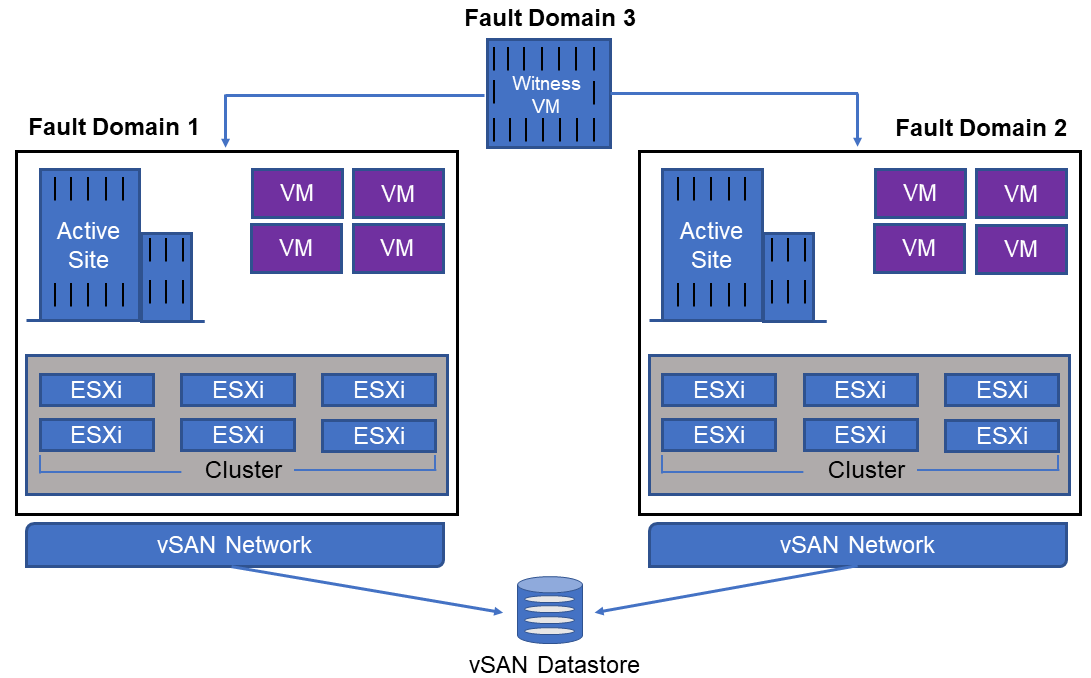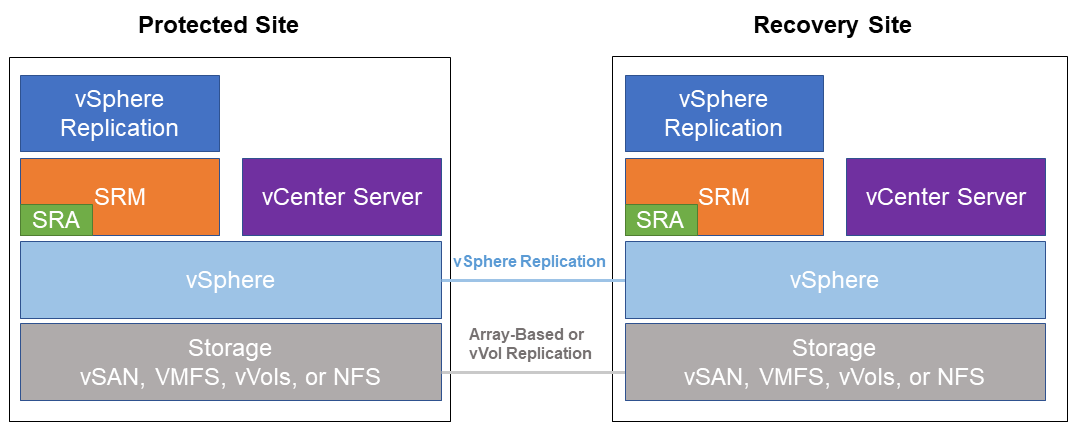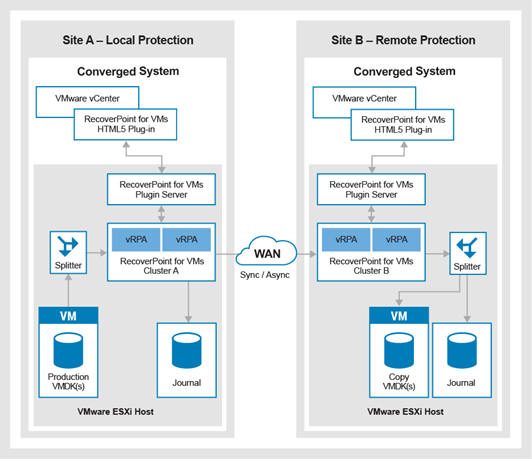Before deciding on a disaster recovery strategy for an ISV application deployment, customers must have a business continuity plan. This plan is unique for a given business, and it should specify the metrics of recovery point objective (RPO) and recovery time objective (RTO). RPO refers to the amount of data you can afford to lose before business operations are impacted. RTO is the timeframe in which the application and systems must be restored after an outage. Both RPO and RTO are typically determined by negotiating a service level agreement (SLA) with the business.
Recovering from a disaster is generally accomplished by using alternative production sites or cloud services. These alternate locations may operate in an active/active or active/passive fashion. A VxRail ISV application deployment provides multiple data protection options for every level of protection. The Dynamic Resource Scheduling (DRS) and High Availability (HA) features of VxRail protect all components of the application stack, without complicated database or application-level cluster configurations.
If such a configuration is desired, application-level clusters can be configured. Such a configuration involves additional components and load balancers to create a clustered multisite environment. Beyond the integrated VxRail HA/DR configuration, the following options are available for a more robust disaster recovery solution.



